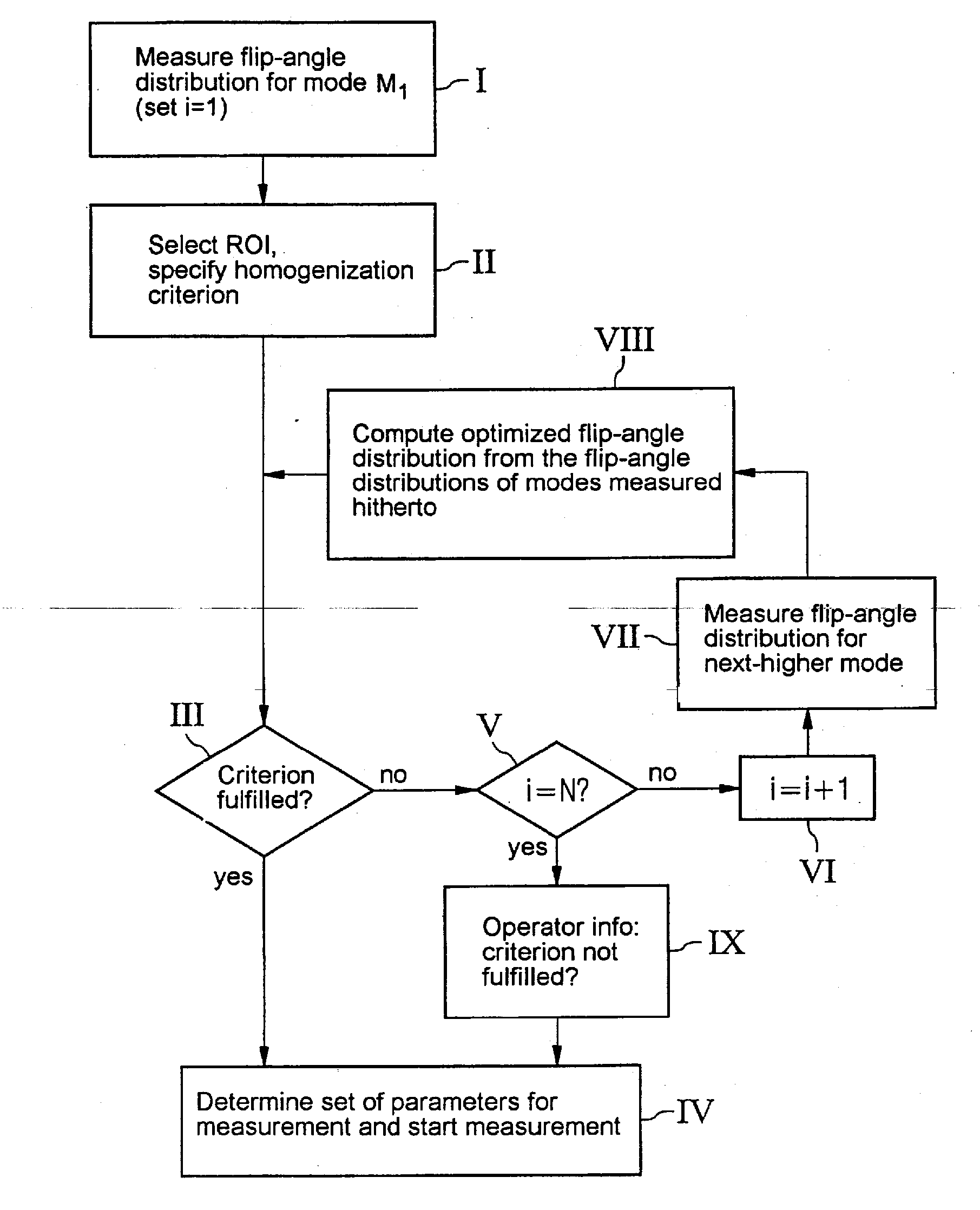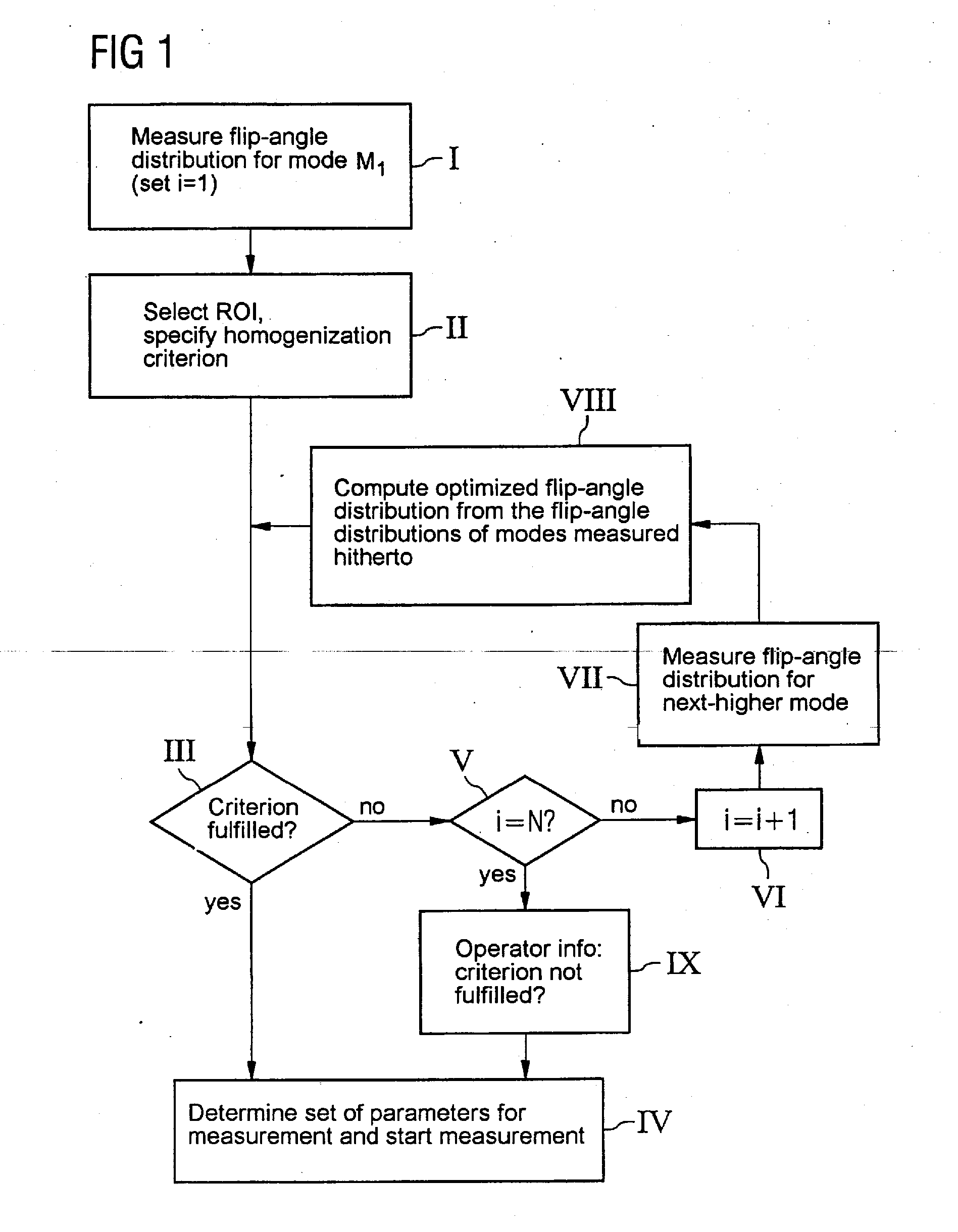Mr apparatus and operating method to set RF transmit parameters
a magnetic resonance system and transmit parameter technology, applied in the field of magnetic resonance system control, can solve the problems of non-homogeneous penetration behavior of radio-frequency pulses in conductive and dielectric media, distortion of measurement, and inability to see pathological structures, and achieve good set of rf transmit parameters
- Summary
- Abstract
- Description
- Claims
- Application Information
AI Technical Summary
Benefits of technology
Problems solved by technology
Method used
Image
Examples
Embodiment Construction
[0040] A possible measurement, evaluation and computation process according to a variant of the inventive method is shown in FIG. 1 with a flowchart.
[0041] In step 1, firstly a flip-angle distribution inside the region of interest is measured for the first transmit mode M1. For a birdcage antenna with eight rods, the current distribution is represented for this first mode M1 (diagram a) of FIG. 2). The current is plotted here (in relative units) over the individual rods 1 to 8. As can clearly be seen, in the first mode M1, the basic mode, a current distribution is plotted such that a current period is distributed precisely between the eight rods. That is, in a phase in which—as shown in FIG. 2—no current is being applied to the first and the fifth rods, the maximum current is being applied to the third and seventh rod, the numbering of the rods being arbitrary.
[0042] With such a resonator with N=8 rods, in principle N=8 different, linearly independent transmit modes can be generat...
PUM
 Login to View More
Login to View More Abstract
Description
Claims
Application Information
 Login to View More
Login to View More - R&D
- Intellectual Property
- Life Sciences
- Materials
- Tech Scout
- Unparalleled Data Quality
- Higher Quality Content
- 60% Fewer Hallucinations
Browse by: Latest US Patents, China's latest patents, Technical Efficacy Thesaurus, Application Domain, Technology Topic, Popular Technical Reports.
© 2025 PatSnap. All rights reserved.Legal|Privacy policy|Modern Slavery Act Transparency Statement|Sitemap|About US| Contact US: help@patsnap.com



